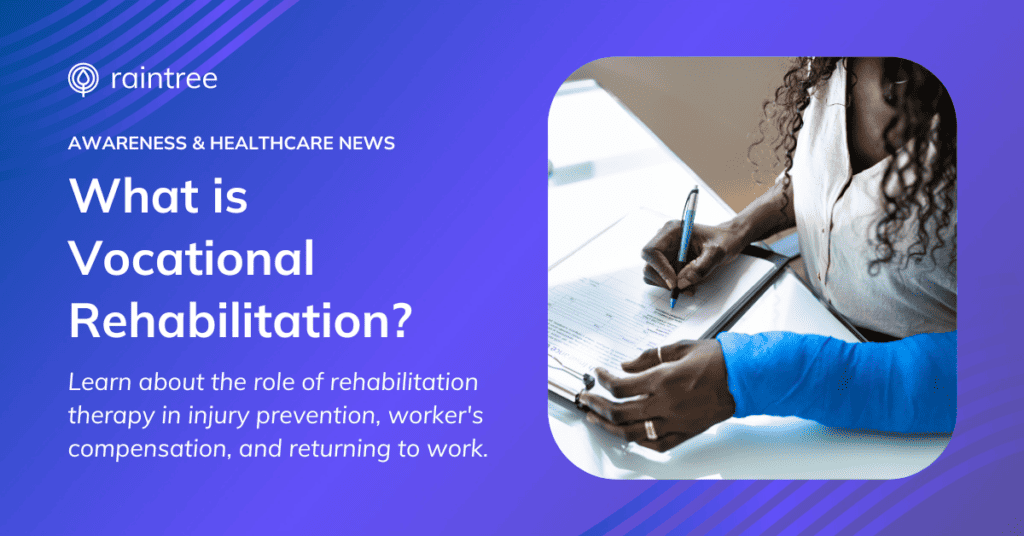Workplace accidents and illnesses are more prevalent than you may think. According to the International Labor Organization (ILO), approximately 340 million work-related injuries occur worldwide annually. Additionally, data from Injury Facts suggests that slips, trips and falls affect about 21 per 10,000 full-time workers. At the same time, 43 out of 10,000 employees get exposure to harmful substances or environments.
Although most of these cases are non-fatal, vocational rehabilitation is often necessary to help you return to work, get another job or continue working as you manage your injuries. These services usually involve practices such as physical and occupational therapy (OT), but how does vocational rehab work? Join us as we take a closer look at how to prevent common workplace injuries and provide pointers on pursuing workers’ compensation.
Injury Prevention
While the Centers for Disease Control and Prevention (CDC) recommends the National Institute for Occupational Safety & Health (NIOSH): Safe Skilled Ready Workforce Program for vulnerable employees, there is no silver bullet for preventing workplace accidents.
Still, you can take several measures to minimize the risks, including:
- Stretching and warming up to get you ready for physically demanding tasks
- Using ergonomic equipment at the workplace for maximum comfort and optimum performance
- Getting employee feedback on working conditions to take care of blind spots before accidents happen
- Providing training on health, safety and productivity in the workplace
Pursuing Workers’ Compensation
The workers’ compensation program is government assistance that takes care of employees or their dependents if employees are injured on the job. This may include wage replacement, vocational rehabilitation and medical treatment, among other benefits. However, compensation terms vary, so you may want to ask your state’s Workers’ Compensation Officials for more information.
If you qualify for workers’ compensation, keep in mind that you may encounter some specific provisions related to vocational rehab:
- If your employer provides vocational rehab, you must use those services at their expense
- Even if you are deemed unable to return to work, you may still access treatment and get help adjusting to a new job at your previous employer’s expense
Returning To Work
Losing the ability to perform everyday activities can be profoundly disruptive, both economically and emotionally. In the event you are unable to restore optimal motor function after injury, occupational therapy alongside physical therapy or other forms of rehabilitation may be necessary to help you regain ability and daily independence.

Physical Therapy
You can expect a physical therapist to ask about your goals or concerns about resuming work in addition to evaluating your current limitations through a series of physical activity tests. Using this information, your therapist can better develop a recovery plan that may include exercises, repetitive motions and task modifications as well as provide supporting coordination with your employer as you return to work.
Occupational Therapy
Similar to physical therapists, occupational therapists work with you to increase strength and flexibility as well as minimize impairments. However, they focus specifically on practical techniques for working around any challenges that may linger after recovery – enabling you to participate in necessary routine and daily tasks as much as possible.
For example, you may not be able to perform all your duties at work or you may have to regain that ability over time. In this case, you’ll need an occupational therapy program that will provide intermittent interventions for maximizing your potential in addition to reviewing workplace safety rules and discussing any arising issues with your employer.
Even better, an occupational therapist also helps tackle emotional problems often accompanied by the inability to work or live in a meaningful way—including discussion of issues such as feelings of dissatisfaction, low self-esteem and communication barriers.
Functional Capacity Evaluation
A functional capacity evaluation (FCE) involves determining the extent of your injury and how it affects your ability to work. If this happens, a physical and/or occupational therapist may carry out an FCE to determine whether you are in a position to resume normalcy, how effective you will be and the challenges you may face. Additionally, an FCE may be useful to determine workers’ compensation case settlement if you were injured directly on the job.
Vocational Rehabilitation Resources
Vocational rehabilitation resources are designed to help you get back to work quickly and cost-effectively. Fortunately, every state has government-sponsored vocational rehabilitation agencies for administering:
- State vocational rehabilitation services
- State-supported employment services
- Independent living services for older blind individuals
Visit the Rehabilitation Services Administration website for more information about aid centers nearest to your location. For job-related injuries in the military, there is a separate website for veterans, which can help assist soldiers who have been injured in combat or during active duty.
How Raintree Empowers Therapy and Rehab
For physical and occupational therapists, managing the various aspects of vocational rehab services can be hectic, especially when it comes to satisfying requirements for performance reporting and cross-agency collaboration. So, in order to succeed, therapy and rehab providers need data-driven software that features:
- High-level automation that streamlines processes such as billing and clinical documentation
- Patient Engagement tools such as automated patient follow-up, survey campaigns and appointment reminders
- Interactive reporting and flexible business intelligence, which can improve overall practice management
Here at Raintree, our powerful all-in-one platform helps therapy and rehab providers facilitate more efficient, engaging patient care. What’s more, our configurable technology-enabled solutions are ideal for effectively managing complex vocational rehab treatment plans, so that PTs, OTs and rehabilitation professionals are best equipped for the unique complexities of an evolving industry.

